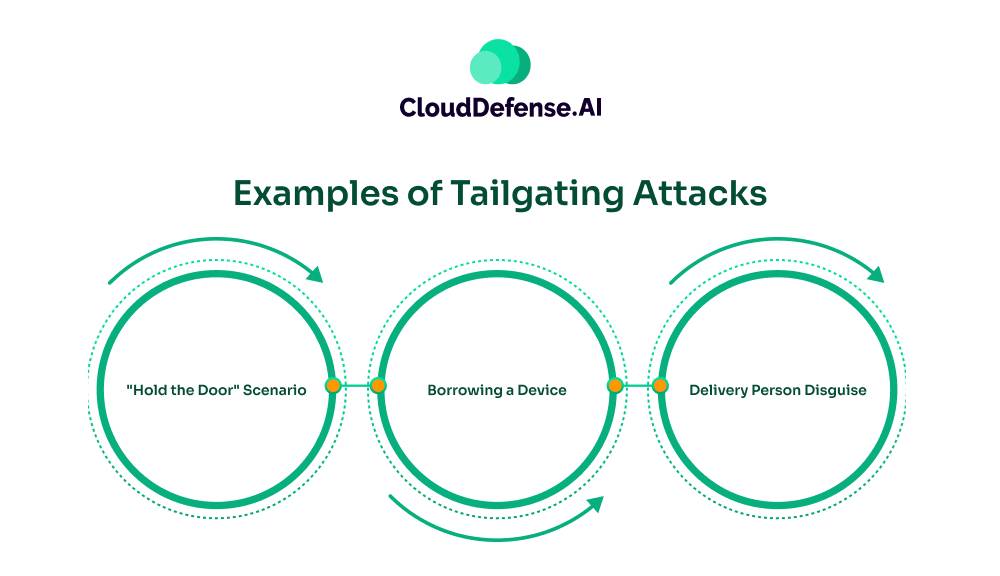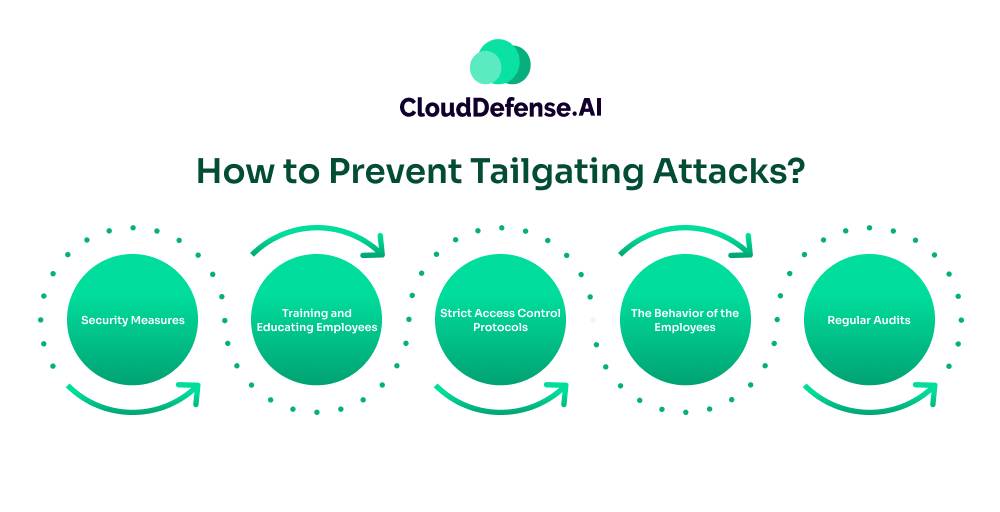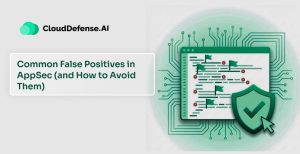What is Tailgating in Cybersecurity?
Tailgating in cybersecurity refers to a security breach where an unauthorized individual gains access to a restricted area by closely following someone with legitimate access. This attack targets an organization’s physical security measures and exploits human behavior rather than digital vulnerabilities.
Typically, the attacker poses as a delivery person or vendor, requesting access by carrying items like parcels or meals. Tailgating can also extend to the digital realm, where attackers gain access to networks by using an employee’s compromised device or credentials.
This initial breach often sets the stage for further attacks, such as malware installation or phishing attempts. Tailgating shows the importance of integrating strong physical security protocols with cyber defenses to reduce risks effectively.
Examples of Tailgating Attacks

Tailgating attacks use physical and social engineering tactics to gain unauthorized access to secure areas or networks. Here are some typical examples:
“Hold the Door” Scenario
In this classic method, an attacker pretends to be a coworker and requests someone entering the building to hold the door open. To enhance their credibility, they might claim to have forgotten their ID card, linger in common areas like break rooms, or engage in casual conversations with actual employees. This approach combines physical breaches with social manipulation.
Borrowing a Device
In this scenario, an attacker asks to use an employee’s laptop or smartphone, citing reasons like a dead battery. Once granted access, the attacker installs malicious software or copies credentials, enabling further network infiltration or data theft.
Delivery Person Disguise
Attackers often pose as delivery personnel or vendors, donning appropriate attire to avoid suspicion. By carrying packages, supplies, or meals, they request access to the building under the guise of making a delivery, exploiting the trust and routine of the office environment.
What’s the Difference Between Tailgating and Piggybacking?
Tailgating and piggybacking are often confused, but they are distinct security threats. This occurs when an unauthorized individual follows closely behind an authorized person to gain access to a restricted area. The intruder simply takes advantage of an open door.
On the other hand, piggybacking involves collusion. An authorized employee knowingly allows an unauthorized person to enter a protected space. This could be a deliberate act or due to social engineering tactics used by the intruder. While both methods result in unauthorized access, the level of intent and involvement differentiates tailgating from piggybacking.
Who is Most at Risk for Tailgating Attacks?
Tailgating attacks often target individuals who are easily influenced or unaware of security protocols. New employees, for instance, maybe less familiar with company procedures and more likely to hold doors open for strangers. Overly trusting staff members can also fall victim to this tactic.
Additionally, organizations handling sensitive information are prime targets. Financial institutions, healthcare providers, and government agencies, with their wealth of personal and confidential data, are particularly vulnerable. These organizations must implement good security measures, including employee training and physical access controls, to protect their assets.
What are the Dangers of a Tailgating Attack?
Tailgating once considered a minor security nuisance, has evolved into a significant threat to organizations worldwide. With social engineering attacks surging 270% in the past year, cybercriminals are increasingly targeting physical security as a weak link in the overall security posture.
Gaining unauthorized access through tailgate provides attackers with a physical foothold within an organization. This can lead to a cascade of detrimental consequences. Not only can they steal high-value equipment, but they can also manipulate critical infrastructure by installing malware or encrypting data. Essentially, the impact of a tailgating attack is on par with a sophisticated cyberattack like ransomware or data breach.
Despite the severity of the risk, a survey revealed that a staggering 74% of security executives were not actively monitoring tailgating activities within their organizations. This alarming statistic highlights the vulnerability of many businesses to this easily preventable threat.
It’s imperative for organizations to recognize tailgating as a serious security risk and implement good physical security measures. By doing so, they can significantly reduce the likelihood of a successful attack and protect their valuable assets.
How to Prevent Tailgating Attacks?

Tailgating, the act of following someone into a restricted area without authorization, poses a significant threat to organizational security. To minimize this risk, a well-planned approach is essential.
Security Measures
Physical Security Measures form the bedrock of tailgating prevention. Implementing strong physical access control systems, such as biometric scanners, passcodes, or keycards, is crucial. These technologies ensure that only authorized individuals can enter restricted areas. Additionally, installing security cameras can act as a deterrent and provide valuable evidence in case of a breach.
Training and Educating Employees
Employee Education and Awareness are equally vital. Regular security awareness training should emphasize the dangers of tailgating and equip employees with the knowledge to prevent it. By understanding the tactics used by attackers, employees can become the first line of defense. Conducting security campaigns can reinforce these messages and create a culture of security within the organization.
Enforcement of Strict Access Control Protocols
Enforcing Strict Access Control Protocols is another critical step. Limiting access to restricted areas to authorized personnel only and ensuring that all doors are properly secured can significantly reduce the risk of tailgating. Reception areas should be staffed to verify visitors’ identities and escort them to their designated areas.
The Behavior of the Employees
Employee Behavior plays a crucial role in preventing tailgating. Employees should be instructed to be vigilant and aware of their surroundings. Holding doors open for strangers should be discouraged, and suspicious individuals should be reported immediately. If unsure about someone’s identity, employees should politely request identification or escort the person to the reception area.
Regular Audits
Regular Security Audits are essential to identify vulnerabilities. By conducting thorough inspections of physical security measures and access controls, organizations can identify potential weaknesses and take corrective action.
It’s important to remember that tailgating is not a standalone threat. It often serves as a precursor to more serious cyberattacks. By implementing a comprehensive approach that combines physical security measures, employee training, and strict access controls, organizations can significantly reduce the risk of successful tailgating attacks and protect their valuable assets.
Tailgating attacks may seem simple, but their consequences can be devastating. With a proactive and layered security strategy, organizations can effectively reduce this threat and protect their sensitive information.
Final Words
Tailgating, while often associated with pre-game festivities, refers to a much more serious security breach in the corporate world. It’s a simple yet effective tactic used by malicious actors to gain unauthorized access to restricted areas. Understanding the concept of tailgating is crucial for businesses and individuals alike.
By recognizing the potential dangers and implementing preventive measures, organizations can significantly reduce the risk of falling victim to this type of attack. Staying informed about tailgating is the first step towards safeguarding your assets and ensuring the security of your workplace.







